
Menu
Are you wondering whether you have thick or thin hair? Knowing whether you have thick or thin hair is key to picking the right products and styles that suit you best. Recognizing your hair type helps you choose haircuts and styles that enhance its natural features, improving your appearance. In this blog post, we’ll help you figure out your hair type and distinguish between thick and thin hair. Let’s dive in now.
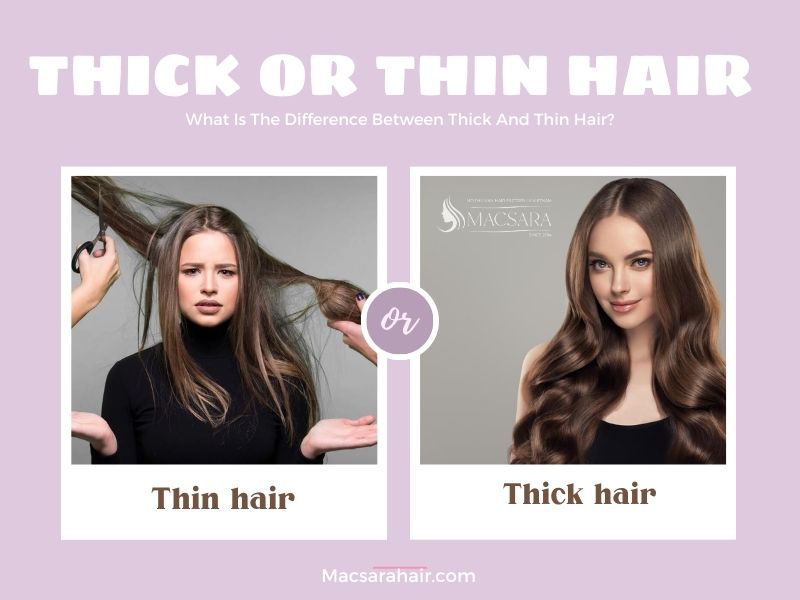
Determining your hair type is a useful step in optimizing your hair care routine and selecting products that will best suit your needs. Here’s a simple guide to help you identify your hair type based on diameter, density, porosity, and shape.
The first step to identifying thick and thin hair types is to measure the thickness of your hair strands, also known as the diameter. The thickness of your strands doesn’t reflect how much hair you have, but rather the width of each strand.
To do this, place a single hair on a flat surface. If it’s hard to see or feel between your fingers, you have fine hair. If the strand is thick and textured, your hair is coarse. And if it’s neither very thin nor very dense, you have medium-width hair.
Knowing your hair’s thickness can guide you in choosing the right hair care products. For example, rough hair, which often frizzes and doesn’t hold moisture well, benefits from hydrating products to moisturize the strands and control frizz.
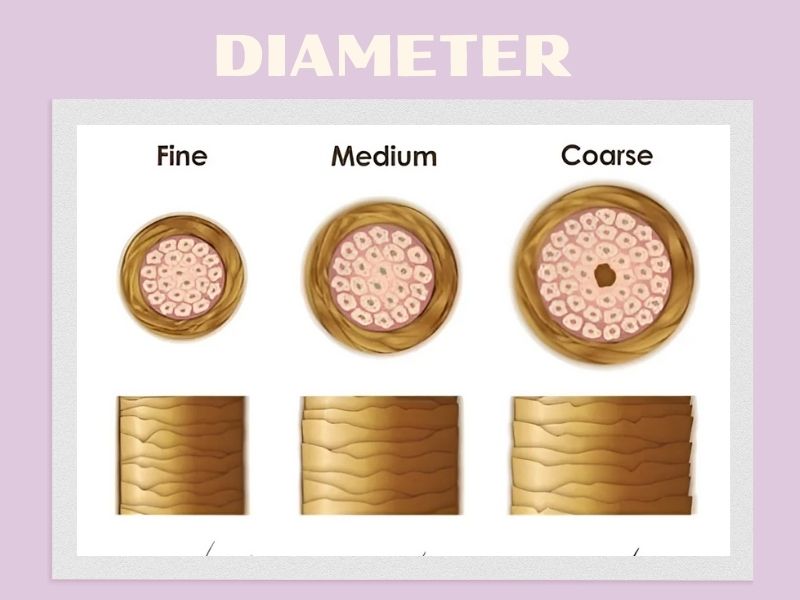
For our purposes, density refers to the amount of hair on your head. Pull a section of hair from the front to the side to set your hair’s density. If you can easily see your scalp through the hair, you have thin density. If your scalp is mostly hidden, your hair is thick. If your scalp visibility is somewhere in the middle, you have medium density.
It’s important to note that the thickness of your hair strands (diameter) doesn’t determine your hair’s density. Density is about how many hair strands you have, not how thick each strand is. Therefore, you might have fine hair but a lot of it (thick density) or coarse hair with not as many strands (thin density). The two characteristics—diameter and density—are the biggest misunderstandings between thick and thin hair.
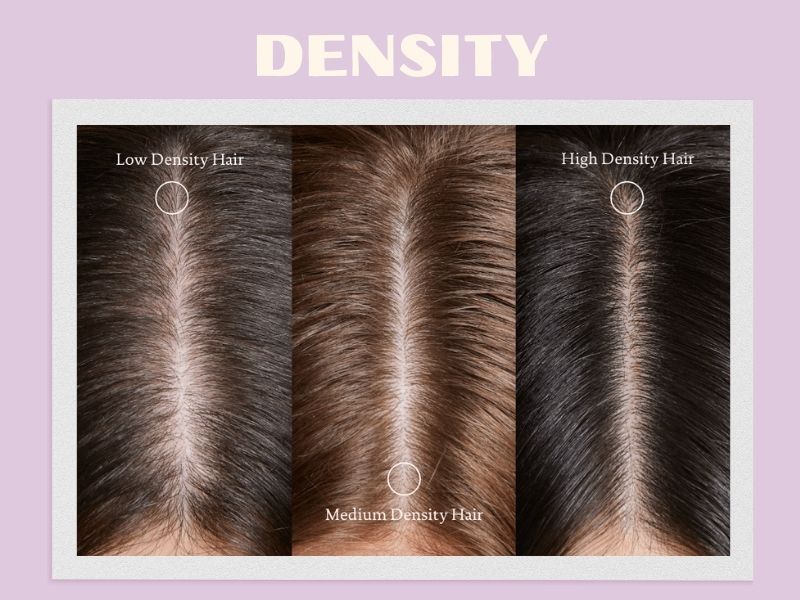
Porosity is a term that describes how well your hair can absorb and hold moisture or products. To test porosity, simply drop a strand of your hair into a bowl of water. If it sinks quickly, you have high porosity hair, meaning it absorbs moisture rapidly but also loses it quickly. If the strand floats on the surface, your hair has low porosity, indicating that it struggles to absorb moisture. If it floats somewhere in between, your hair has normal porosity, which is ideal as it indicates a healthy balance.
What does hair porosity mean for your hair care routine? For low-porosity hair, the cuticles lay flat, and moisture doesn’t easily spike, often leading to longer drying times and product buildup on the surface of the hair. To manage low-porosity hair, try spreading products evenly and applying them to damp hair to enhance absorption and prevent buildup.
If your hair is highly porous, it means there are gaps or tears in the cuticle, often due to chemical treatments, heat styling, or other forms of damage. As a result, your hair absorbs products rapidly, which might lead you to use more products than usual. Although highly porous hair tends to dry quickly, it often remains undernourished and lacks hydration. To care for this hair type, it’s advisable to minimize heat exposure that could further dehydrate your hair and to seek out intensely hydrating products that can provide substantial moisture to your strands.
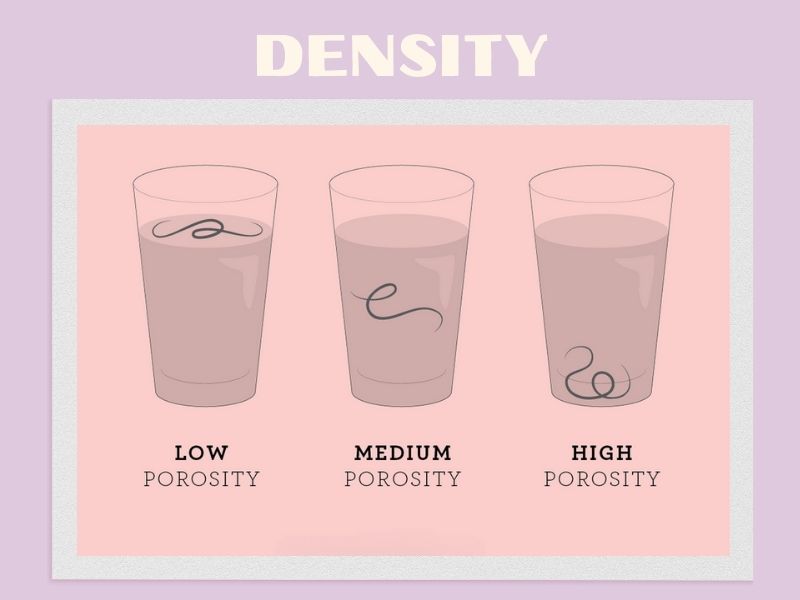
When discussing hair shape, we are talking about the natural bends or the absence thereof in your strands. Straight hair lacks bends and creases. Wavy hair features slight “S” shaped bends. Curly hair is characterized by tighter curves without spirals, and if your hair forms clear ringlets, you have spiral curls.
Understanding your hair’s shape and other characteristics can guide you in choosing the right products. By looking for key terms that match your hair type while shopping, you can ensure you select products that are effective for your specific needs.
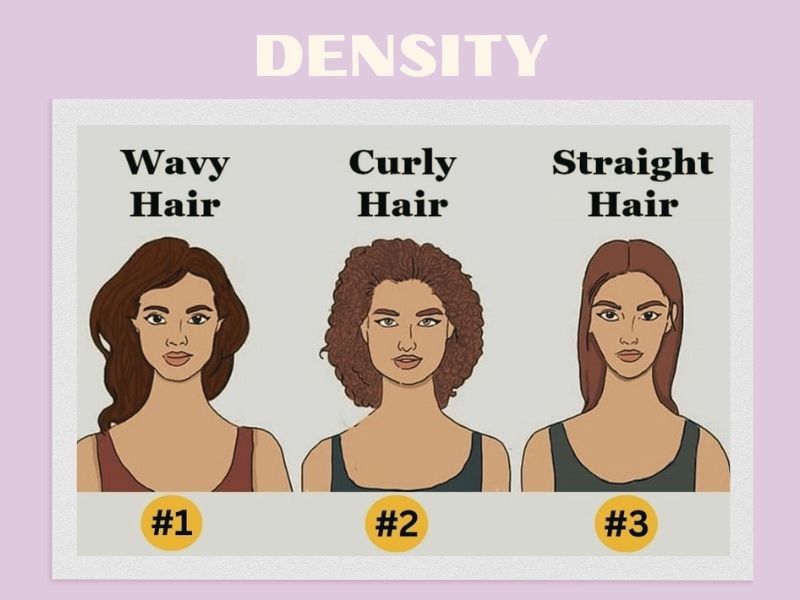
To put it simply, the difference between thin and thick hair is:
Thick hair means having a high density of hair strands on your scalp, which could be due to the strands themselves being wide or because there are many hair follicles. Thin hair is just the opposite, having fewer hair strands per area.
It’s essential to note that having thick hair doesn’t automatically mean your hair is healthy. Many people prefer thick hair, as it often looks fuller and healthier. Conversely, thin hair is often viewed negatively, as it can appear less healthy and is sometimes associated with hair loss.
However, these are general perceptions in the debate over thick versus thin hair. Thin hair isn’t inherently unhealthy unless there has been a noticeable change from previously thicker hair.
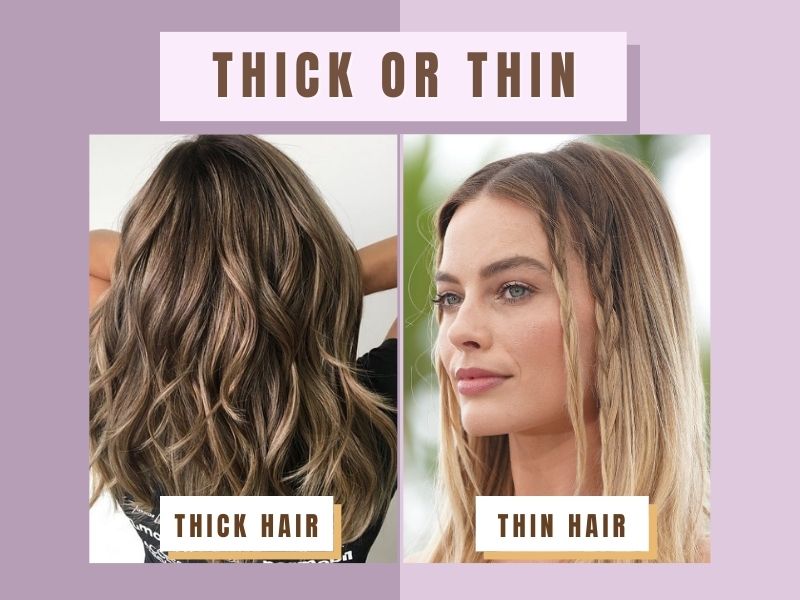
Whether you have thick or thin hair, you can start implementing some of our tricks for improving the look and feel of your hair type. Continue to find out the difference between thick and thin hair through their caring progress.
Hair masks are designed for deep penetration and are especially effective on thick hair since they stay on longer than regular conditioners. They can deeply penetrate the cuticles and reach the inner parts of your hair strands, which helps reduce damage, breakage, and dryness that often lead to frizz.
For example, a custom hair mask contains nourishing ingredients like argan oil, Japanese sake extract, and jojoba ester oil, which are great for taming frizz and boosting moisture. Use this mask once a week instead of your regular conditioner, leave it on as directed, and then rinse it out to enjoy softer, smoother hair that looks healthy and thick.
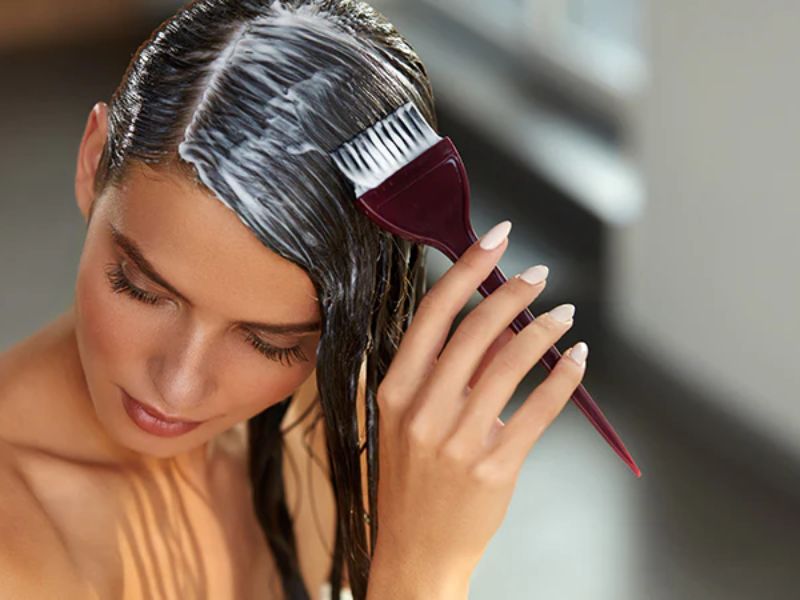
To better manage your thick hair, consider asking your hairstylist to thin out your hair or add layers during your next visit. Layers help reduce bulk and add movement while maintaining length, and thinning the ends can decrease overall volume.
Another tip for managing thick hair involves careful post-shower handling. Hair is most vulnerable when wet, so avoid harsh drying techniques. Instead, gently pat your hair dry with a soft microfiber towel and use a wide-tooth comb to detangle, which helps prevent breakage and minimize frizz.
Though thin hair typically doesn’t struggle with frizz and tangles, it often lacks volume, leading to the dreaded flat look. However, with the right strategies and products, adding volume is achievable.
Begin by using shampoo and conditioner tailored to your hair needs, like enhancing volume and strength to make your hair look fuller. For instance, opt for customized shampoo and conditioner that suit your unique hair type.

If you have naturally straight and flat hair, you’re likely dealing with thin strands. You might use styling tools like curling irons and blow dryers to add body. However, it’s crucial to apply a thermal protector before using heat to prevent damage.
Applying a hair serum is an excellent choice for thin hair because it’s lightweight, meaning it won’t weigh down your hair. It also helps tame flyaways and enhance smoothness. By using the right products and techniques, you can add volume and body to your thin hair without compromising its health. If you’re short on time, consider using hair extensions at Macsara Hair for instant volume and thickness.
No more battling over who has it worse: thick hair or thin hair. Instead, find ways to maximize the benefits of your hair thickness and take advantage of products that complement the look of your unique hair density. Both thick and thin hair also deserve to be pampered with love and support. For high-quality hair extensions, visit Macsara Hair today for 100% human hair wholesale hair products. As the biggest Vietnamese hair factory, we provide hair extensions that come in various lengths, colors, and textures at unbeatable prices. Feel free to contact us now on WhatsApp at +84 98 6980 492 for further details and 24/7 support!

Mr. Jack Nguyen - The CEO and founder with a broad and visionary perspective of Macsara Hair - a company with a leading human hair factory in Vietnam.
Grab our promotions first
Copyright 2023 © Macsara Hair
